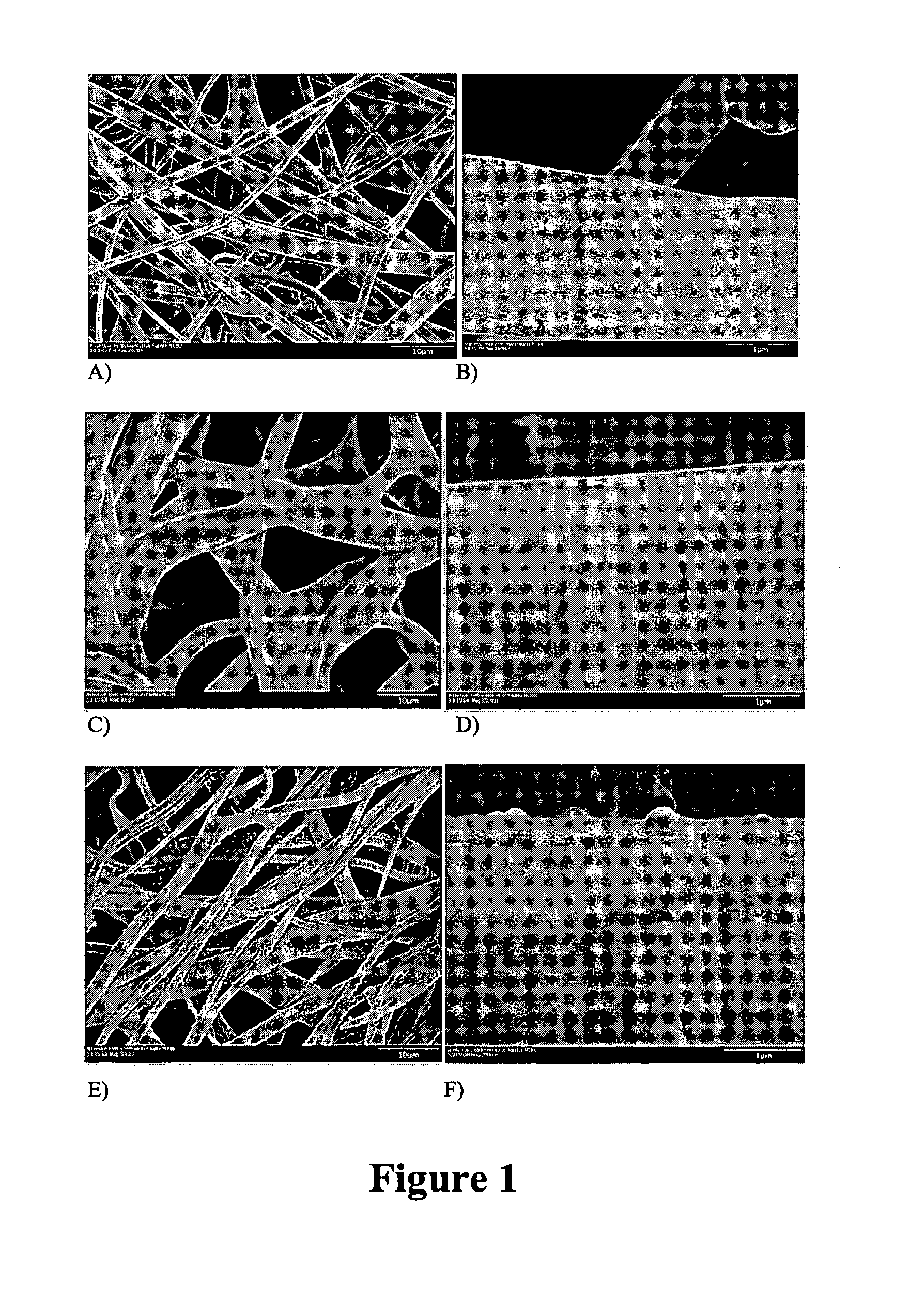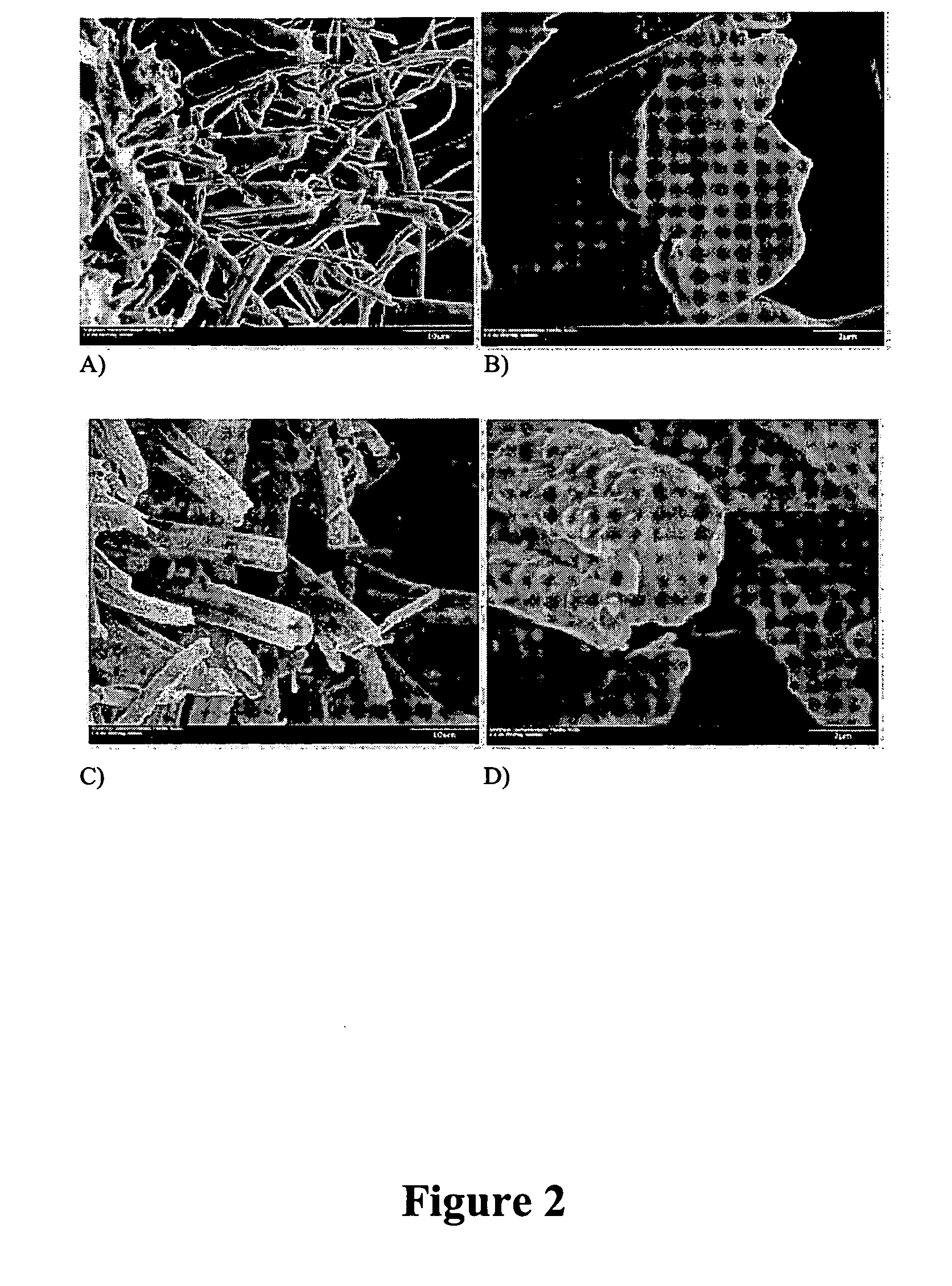Conformal coating of polymer fibers on nonwoven substrates
- Summary
- Abstract
- Description
- Claims
- Application Information
AI Technical Summary
Benefits of technology
Problems solved by technology
Method used
Image
Examples
example 1
[0042]A specimen of polypropylene (PP) nonwoven 250 μm thick and of dimensions 2×4 cm was exposed to UV irradiation of 150 to 300 nm (UV / O) and intensity 50 mw / cm2 for 15 minutes. The substrate was then soaked with 20% glycidyl methacrylate and benzophenone (Initiator:Monomer or I:M=1:25) in butanol solution. The substrate was sandwiched between two glass slides coated with Frekote®, and then exposed to UV of 300 to 450 nm and intensity 5 mw / cm2 for 15 minutes for grafting. The grafted nonwoven substrate was then washed by sonication in THF and methanol to remove unreacted and unattached compounds.
[0043]FIGS. 1A) and B) show the original PP nonwoven web and fiber. The surface of the original PP fiber is covered with cracks as a result of melt-blown process. FIGS. 1C) and D) show the nonwoven web and fiber after grafting, but before washing. Very smooth coatings are formed on the fibers. However, these coatings are not permanent. FIGS. 1E) and F) show the nonwoven web and fiber after...
example 2
[0046]Grafting results shown in FIG. 4 were from the same process producing FIGS. 1E) and F) in Example 1, except that in Example 2 the benzophenone to monomer ratio (I:M) was 1:5. The results in FIG. 4 clearly indicate that this technique can change the morphology of the coating from very coarse to very smooth by simply adjusting the benzophenone to monomer ratio.
example 3
[0047]Four specimens of polypropylene nonwoven 250 μm thick and of dimension 2×4 cm were exposed to UV irradiation of 150 to 300 nm and an intensity of 50 mw / cm2 for 0, 5, 15 and 30 minutes, respectively. The pre-treated samples were then grafted with PGMA in the same way as in Example 1. FIG. 5 indicates that both density and conformity of PGMA graft increase with the time of UV / O treatment.
PUM
| Property | Measurement | Unit |
|---|---|---|
| Fraction | aaaaa | aaaaa |
| Percent by mass | aaaaa | aaaaa |
| Weight | aaaaa | aaaaa |
Abstract
Description
Claims
Application Information
 Login to View More
Login to View More - R&D
- Intellectual Property
- Life Sciences
- Materials
- Tech Scout
- Unparalleled Data Quality
- Higher Quality Content
- 60% Fewer Hallucinations
Browse by: Latest US Patents, China's latest patents, Technical Efficacy Thesaurus, Application Domain, Technology Topic, Popular Technical Reports.
© 2025 PatSnap. All rights reserved.Legal|Privacy policy|Modern Slavery Act Transparency Statement|Sitemap|About US| Contact US: help@patsnap.com



